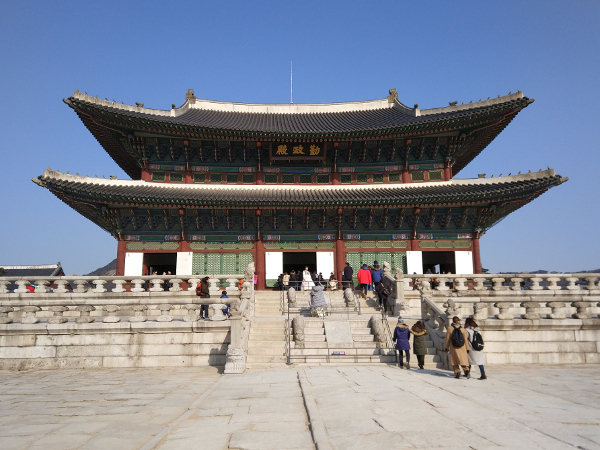Korean Lessons ᚛ Level 1 - My First Steps in Korean (Lessons 1 to 30) ᚛ Lesson 29 - The particle of place and destination [에]
The particle of place and destination [에]
In this lesson and the following ones, we will study a series of essential particles to be able to express sentences related to space.
The 에 particle is used in many different cases. It can be used to indicate a name referring to a place in the following cases:
- Indicating a location
- Indicating a destination linked to a movement
- Expressing an action made on an object
Expressing location with 에
We have already seen in the lesson on the verb 있다 (= to exist, to have) that it is possible to use the particle 에 to express the verb "to be, to exist", in order to indicate the presence or absence of something or someone in a specific place.
In English, the particle 에 is generally translated as "to / at" or "in".
Like all particles, 에 is placed just after the place / location concerned.
고양이는 침실에 있어.
→ The cat is in the room.
산에 모기가 있어요.
→ In the mountains, there are mosquitoes.
그 카페에 사람이 많이 있습니다.
→ There are a lot of people in this cafe.
In order to express the absence of something or someone in a place, we use the opposite verb of 있다 which is 없다 (= not to exist, not to have).
민지는 교실에 없었어요.
→ Minji wasn't in the classroom.
냉장고에 아이스크림이 없어요.
→ There is no ice in the fridge.
Be careful, 에 indicates a place for which no action is described, only the presence or absence of something or someone. If we want to talk about a place in which an action takes place, it is the particle 에서, which we will see in the next chapter, that we must use.
Expressing the destination of a movement with 에
The 에 particle also indicates a place to which we are heading, it indicates the destination linked to an action, a movement.
Learn more
어제 수현이가 프랑스에 돌아갔어요.
→ Yesterday Suhyeon returned to France.
친구가 우리 집에 게임기를 가져올 거야.
→ My friend will bring a game console to my house.
시장에 다녀왔어요.
→ I went to the market (and came back).
지하실에 내려왔어요.
→ I came down to the cellar.
부모님 댁에 갈 거예요.
→ I'm going to go to my parents' house.
Note: The word 댁 is used to respectfully refer to someone's house, instead of 집.
Expressing an action relating to an object
Learn more
Combination of particles
Learn more
Exercises
Learn more
Traveling to South Korea can be an unforgettable experience. But when you don’t speak Korean, everything gets more complicated: ordering in a restaurant or café becomes stressful, you can’t understand signs or directions, asking for help in case of trouble is nearly impossible, and most importantly, you miss out on the very essence of a successful trip to Korea: connecting with the locals.
Since English - Korean machine translators can’t always be trusted (the two languages work in completely different ways), it’s essential to prepare yourself in advance to fully enjoy your trip to South Korea!
Learn more

